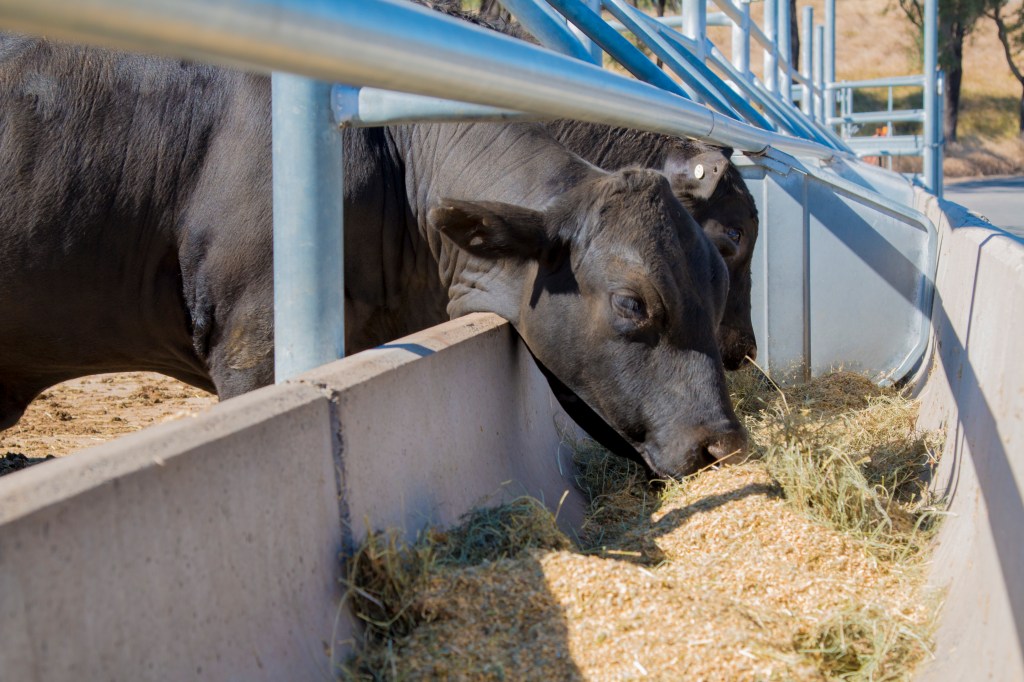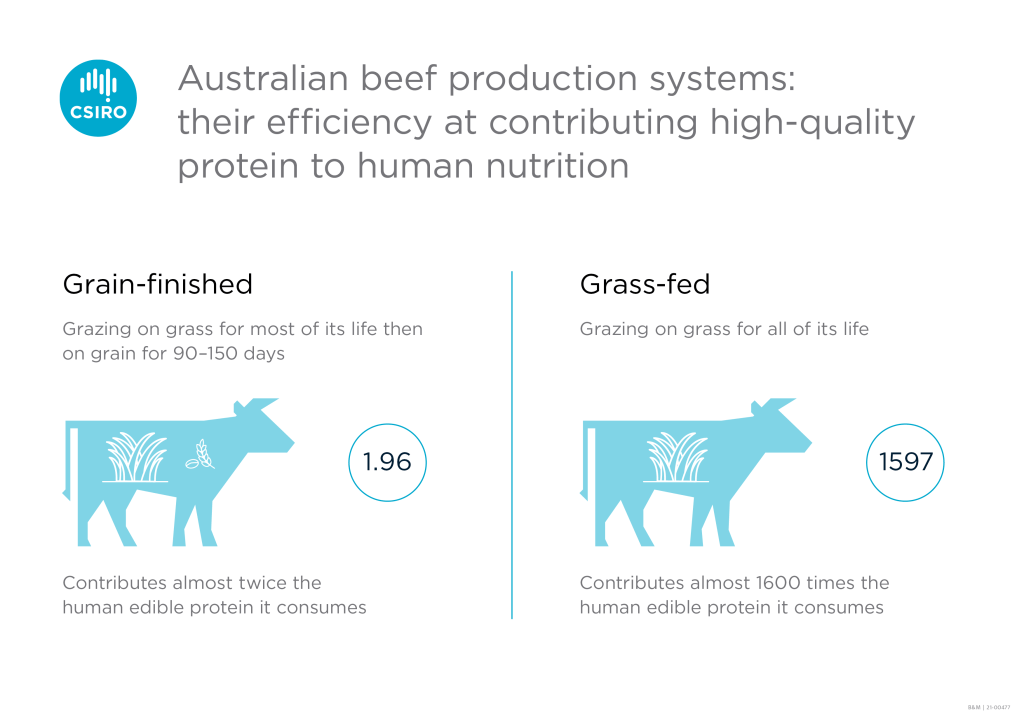Australia’s national science agency has quantified the contribution Australian beef makes to the supply of human edible protein.
Incorporating both grain-fed cattle and grass-fed cattle finished on grain, CSIRO’s research measured the quality and quantity of protein created by Australia’s beef production system.
It found that grain-fed systems contribute almost twice (1.96) the human edible protein than they consume, whereas grass-fed systems produce just short of 1600 times the human edible protein (1597). A rating of higher than one indicates it has a positive contribution to meeting human nutritional requirements.

The research was undertaken as part of the CSIRO’s Future Protein Mission, and is the first time its emerging ‘net protein contributor’ concept has been applied in Australia.
Despite often being criticised for using land and grain that could produce food for human consumption, the CSIRO says Australian beef production is efficient at making high quality protein for human consumption – from both low quality protein in grains that humans can eat, and protein in grasses we can’t.
Feed vs food
“Cattle are efficient upcyclers of grass and other feedstuffs not just in terms of the quality of protein they create. They contribute a greater amount of protein to our food system than is used in their production as well,” said Dr Dean Thomas, CSIRO livestock systems scientist.
To test the assumption that grain-fed beef competes with humans for protein (known as the feed versus food debate), CSIRO modelled real world data in typical Australian beef production systems including methane emissions, historical climate records and commercial feedlot diets.

According to Dr Thomas, rations used in Australian feedlots can be quite low in human edible protein.
“The feedlot sector increasingly uses locally available by-products such as spent grain from bio-alcohol, feed-grade grain and cottonseed, while still meeting nutritional requirements for cattle,” he said.
Michelle Colgrave, Future Protein Mission lead, said the findings are valuable for both consumers and the industry.
“Research like this could help consumers assess their options in terms of what protein foods they choose in relation to sustainability.
“It also could be yet another positive selling point for Australian beef in export markets,” she said.
To stay up-to-date on the latest industry headlines, sign up to Future Alternative’s enewsletter.
Posted on:


